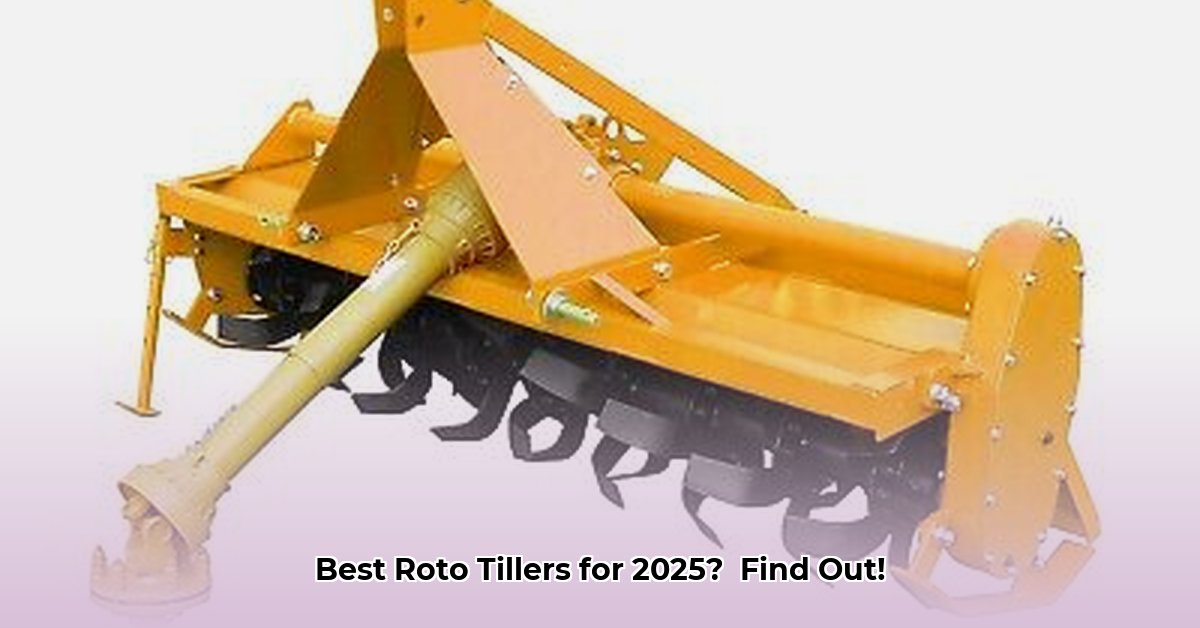
Choosing the Right Rototiller for Sustainable Agriculture
Thinking about investing in a rototiller to enhance your gardening or farming practices? This comprehensive guide helps you navigate the options available at Tractor Supply, focusing on sustainability, efficiency, and long-term value. We'll compare various models, considering power sources, environmental impact, soil health, and ease of use, providing a data-driven approach to selecting the best rototiller for your specific needs. Are you ready to optimize your soil management and contribute to a more sustainable future? For more detailed information on Tractor Supply's rototiller selection, check out Tractor Supply Rototillers.
Power Source Showdown: Gas, Electric, or Battery?
The heart of any rototiller is its power source. Each type—gas, electric, and battery—presents distinct advantages and disadvantages:
Gas-Powered Rototillers: These offer the highest power output, ideal for large areas and challenging soil conditions. However, they generate significant noise and emissions, impacting the environment. Maintenance also involves regular oil changes and potential repairs. Is the increased power output worth the environmental cost and maintenance burden?
Electric Corded Rototillers: These are significantly quieter and produce zero direct emissions, making them an environmentally friendly choice. Their power, however, is often limited, and the power cord restricts maneuverability. Are the benefits of quiet operation and reduced emissions sufficient for your acreage and soil type?
Battery-Powered Rototillers: This option combines the quiet operation and clean energy of electric models with enhanced portability and maneuverability. Battery life and charging times are critical factors, limiting their use for extensive tilling operations. How important is cordless convenience versus the potential limitations of battery runtime?
Sustainable Soil Management: The Tilling Debate
Sustainable agriculture centers on minimizing soil disruption. While rototillers offer efficient soil preparation, excessive or improper tilling can negatively impact soil structure, leading to erosion and a decrease in organic matter. No-till and reduced-till farming methods offer alternatives, but they may not be suitable for all situations. How can you strike a balance between efficient soil preparation and preserving soil health?
Selecting Your Ideal Rototiller: A Step-by-Step Guide
Assess Your Needs: Begin by evaluating your garden or farm's size, soil type (clay, sandy, loam), budget, and sustainability priorities. What are your primary goals for using a rototiller?
Power Source Selection: Based on your assessment, choose a power source that aligns with your needs and priorities. Consider the trade-offs between power, noise levels, environmental impact, and maintenance requirements.
Model Research: Explore Tractor Supply’s website and other retailers for options matching your chosen power source and requirements. Crucially, examine user reviews carefully, paying attention to factors like tilling width, weight, and performance in different soil conditions.
Hands-On Evaluation (If Possible): If feasible, visit a store to physically examine and handle different models. This allows you to assess weight, maneuverability, and overall suitability. How does the tiller feel in your hands?
Final Decision: Compare models based on your evaluation. Consider not only the initial purchase price but also the long-term expenses for fuel, electricity, maintenance, and potential repairs. Which model provides the best value for your needs?
Maintaining Your Rototiller: Extending Its Lifespan
Regular maintenance significantly extends your rototiller's operational life and optimizes its performance. Key steps include:
Regular Oil Changes (for Gas Models): Adhere to the manufacturer's schedule for oil changes to prevent engine wear.
Tine Sharpening: Dull tines reduce efficiency and can damage your soil. Sharpen them regularly to maintain optimal tilling performance.
Post-Use Cleaning: Always clean your tiller after each use to prevent debris buildup and potential damage.
Seasonal Storage: Store your rototiller in a dry, sheltered location during periods of non-use.
Mastering Tilling Techniques: Optimizing Soil Health
Successful tilling involves more than just using the right machine. Proper techniques minimize soil disturbance and maximize plant growth. Key principles include:
Depth Control: Avoid excessively deep tilling, which disrupts beneficial soil organisms and organic matter. Adjust tilling depth based on soil type and crops.
Frequency Management: Over-tilling compacts soil and reduces its fertility. Till only when necessary, such as before planting or to break up compacted areas. Minimize tilling during the growing season.
Optimal Timing: The best time for tilling depends on your climate and crops. Many regions find spring ideal, allowing soil warming and settling before planting.
Rototiller Comparison Table (Example)
(Note: Specific models and pricing are subject to change. Consult Tractor Supply for the most up-to-date information.)
| Model | Power Source | Tilling Width (inches) | Weight (lbs) | Approximate Price ($) | Key Features |
|---|---|---|---|---|---|
| Model A (Gas) | Gas | 18-24 | 80-100 | ~$300-400 | Powerful, wide tilling width, suitable for large areas |
| Model B (Electric) | Electric | 12-18 | 50-70 | ~$200-300 | Quiet, low emissions, ideal for small gardens |
| Model C (Battery) | Battery | 14-20 | 60-80 | ~$250-350 | Cordless convenience, good power for its size |
Note: This is a simplified example. Always conduct thorough research before purchasing.
Choosing the right rototiller requires careful consideration of your specific needs and priorities. This guide provides a framework for making an informed decision, but remember to conduct additional research specific to currently available models at Tractor Supply and other retailers. By selecting a rototiller that optimizes both efficiency and sustainability, you'll invest in a healthier garden and a more environmentally conscious farming practice.